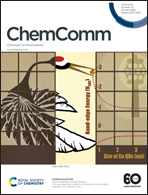From nano- to macroarchitectures: designing and constructing MOF-derived porous materials for persulfate-based advanced oxidation processes
Abstract
Persulfate-based advanced oxidation processes (PS-AOPs) have gained significant attention as an effective approach for the elimination of emerging organic contaminants (EOCs) in water treatment. Metal–organic frameworks (MOFs) and their derivatives are regarded as promising catalysts for activating peroxydisulfate (PDS) and peroxymonosulfate (PMS) due to their tunable and diverse structure and composition. By the rational nanoarchitectured design of MOF-derived nanomaterials, the excellent performance and customized functions can be achieved. However, the intrinsic fine powder form and agglomeration ability of MOF-derived nanomaterials have limited their practical engineering application. Recently, a great deal of effort has been put into shaping MOFs into macroscopic objects without sacrificing the performance. This review presents recent advances in the design and synthetic strategies of MOF-derived nano- and macroarchitectures for PS-AOPs to degrade EOCs. Firstly, the strategies of preparing MOF-derived diverse nanoarchitectures including hierarchically porous, hollow, yolk–shell, and multi-shell structures are comprehensively summarized. Subsequently, the approaches of manufacturing MOF-based macroarchitectures are introduced in detail. Moreover, the PS-AOP application and mechanisms of MOF-derived nano- and macromaterials as catalysts to eliminate EOCs are discussed. Finally, the prospects and challenges of MOF-derived materials in PS-AOPs are discussed. This work will hopefully guide the design and development of MOF-derived porous materials in SR-AOPs.



 Please wait while we load your content...
Please wait while we load your content...